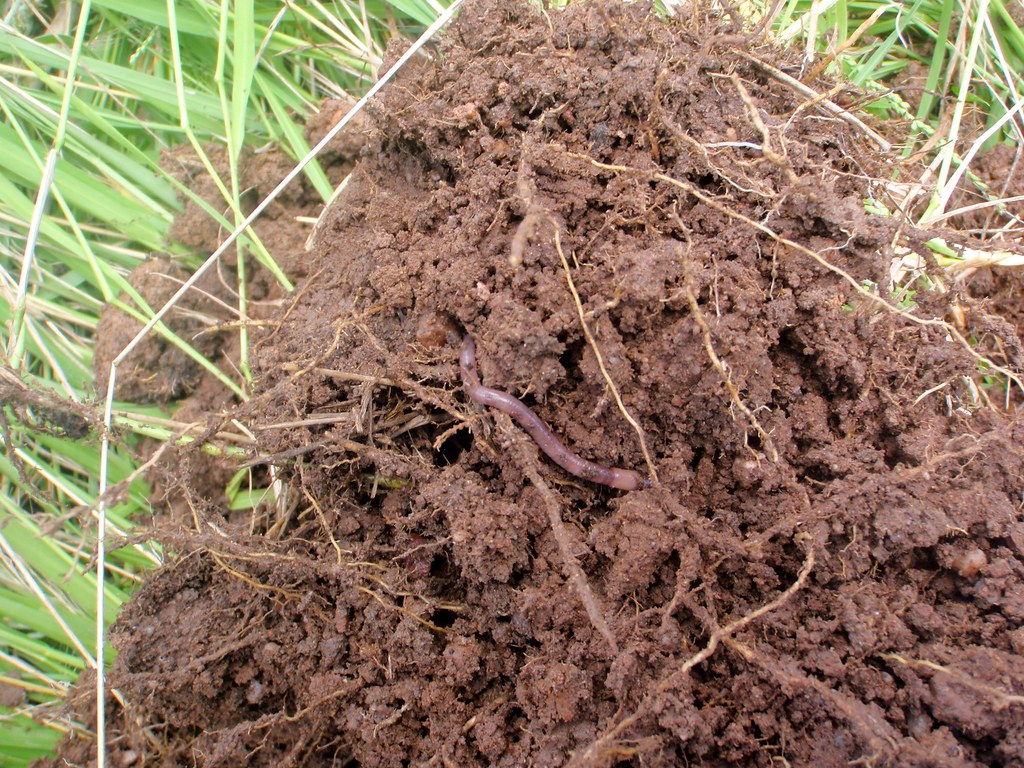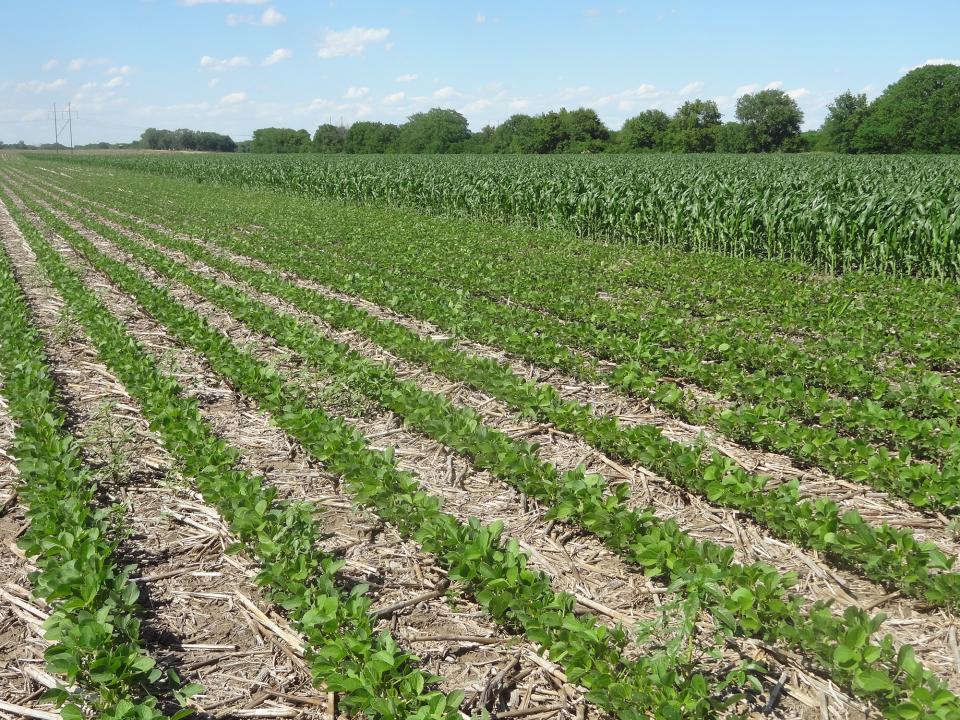it will no longer yield its
strength to you;
you will be a vagrant and a
wanderer on the earth.”
Genesis 4:12*
In 1970, an
agronomist named Norman Borlaug was awarded the Nobel Peace Prize. He advocated hybridization of grains for
higher crop yields, ushering in a new era of industrialized agriculture. The Nobel Committee recognized Borlaug’s work
as instrumental in saving a billion people from starvation. Unfortunately, intensive farming that is part
and parcel of the industry may be fostering an acceleration of another big
problem. Unsolved it could leave
humanity wandering like vagrants on the earth…with very empty bellies.
 |
| Top Soil Cross Section |
The implications of topsoil loss for food production are dire. The United Nation’s Food and Agriculture Organization (FAO) estimates that about one third of the world’s topsoil has been degraded. If current rates of loss continue, in about 60 years the world’s topsoil will not support growth of food. That means a child born in this decade could end up as one of those wandering vagrants.
Topsoil losses
are not even around the world. In the
United Kingdom, if no changes are made, the pace of topsoil loss means there
are about 100 harvests left in the land.
In the United States, there are a few more years of productivity left in
our soil. However, development activity
is squelching the life out of about a million acres per year in the North
American continent. In 1980, the U.S.
had an average two acres of cropland per person. By 2010, with a net increase of about 90
million people in our population, the U.S. only had about 1.2 acres in
cultivation per person.
Industrial
Agriculture
Some might
suggest that more food could produced by simply putting additional land to the
plow and applying more fertilizer. Therein
lies the rub. True enough the FAO has
determined that deforestation accounts for as much as 30% of soil loss as
cleared lands are stripped of top soil by wind and water erosion. However, the majority of topsoil degradation
is the result of industrial farming activities that encourages overgrazing
(35%) and relies on chemical fertilizers (27%).
Especially when coupled with
irrigation, excessive use of fertilizers leads to leaching of vital nutrients
from the soil and increased salinity. In
North America, industrial agricultural practices account for two-thirds of
topsoil loss.
Soil Woes
Soil needs to be
‘friable’ for optimum productivity.
Chemical fertilizers that are popular with industrial agriculture are
highly soluble and get absorbed into the ground faster than by the crop plant
the fertilizer is intended to nurture.
Acids in chemical fertilizers destroy vital components of topsoil called
‘soil crumbs.’ Decomposed organic matter
such as dead leaves and plants combined with clay in the topsoil to make these
‘crumbs.’ They play a vital role in soil
drainage and air circulation in the soil
- both critical in plant growth. Chemical fertilizers destroy the soil crumbs
and cause compacting and erosion.
 |
| Healthy, Friable Top Soil |
Another problem
is the loss of micro-organisms in topsoil.
Synthetic chemicals in modern fertilizers impact the soil pH, making it
in hospitable to beneficial micro-organisms. For example, there are
antibiotic-producing bacterial in soil that help plants ward off disease and
natural fungi that help plants defend against pests. Most importantly, modern fertilizers impact
the bacteria that fix the nitrogen balance in soil by converting oxygen to a
form of nitrogen that plants can consume.
Debunking of
Borlaug’s Hybrid Seeds
Borlaug suggested
hybrid seeds could be a salvation for a planet that is experiencing rapid
population increases - and hungry mouths to feed. Unfortunately, it would seem that the use of
hybrid grains could be a bane to agriculture and a threat to human
survival. Some studies have found that
modern wheat varieties have half the micro-nutrients of older strains. Likewise some fruits and vegetables have lost
as much as half the nutritional value measured in 1950. The problem is the degradation of topsoil
from which crop plants derive micro-nutrients.
It is important
to note that there are critics of the analytical approach of the Kushi
Institute, which is often the source cited to support the argument that food
crop nutritional values have declined. Mineral
Resources International Ltd., a manufacturer of nutritional supplements, has
published similar results and is also often criticized for lack of peer review.
The lack of
authoritative and respected analysis of food nutritional content is a bit of an
obstacle for investors. However, it also
underscores the importance of critical thinking before committing capital to a
destructive agricultural practices or poorly crafted solutions.
 |
| Iowa Corn Field |
The nutritional
approach may not be the only way to measure the implications of topsoil
loss - at least as far as the food chain is
concerned. According to the USDA Natural
Resources Conservation Services, in the heart of the nation’s breadbasket, Iowa
is losing topsoil at a rate of 5.5 acres per year. The Iowa Daily Erosion Project observes that
there has been a reduction in corn yield that is linked to thinning
topsoil. The loss in yield could be as
much as 29 bushels per acre in the most eroded fields with the average of 10
bushels per acre across the state.
Iowa farmers
have applied fertilizer in ever increasing amounts and that has served to
offset the loss in crop yield. Nonetheless,
the topsoil loss is unsustainable. For
every 5 tons of topsoil lost each year in Iowa only 0.5 acre of topsoil is
replenished. Under these conditions,
eventually the 8 to 10 inches of topsoil will be reduced to nothing.
It is not just
dirt…
It may just look
like dirt, but the topsoil situation cannot be ignored by investors, especially shareholders of companies that are counting on selling products to Iowa farmers. We
begin a new series on the agriculture sector, exploring companies that are
likely to benefit the most through fixing the topsoil situation and those that are
likely to lose.
*Genesis 4 describes the rise and downfall of Abel and
Cain, the sons of Adam and Eve. Abel is
favored by the Lord and out of jealousy Cain strikes him dead. As a consequence of his treachery, the Lord
renders Cain’s hand unproductive and he is forced to wander the earth as a
fugitive. Although apocryphal in nature,
the story serves as well today as it did when first told around camp fires - destructive
behavior can well lead to society’s demise.
Neither the author of the Small Cap Strategist web
log, Crystal Equity Research nor its affiliates have a beneficial interest in
the companies mentioned herein.
1 comment:
Running a subsoiler or applying a line of compost (or fertilizer) along the windrow line could always be done in the future (like icing on the cake) to enhance the effect.
Thanks for stimulating my thoughts on this subject.
topsoil
Post a Comment